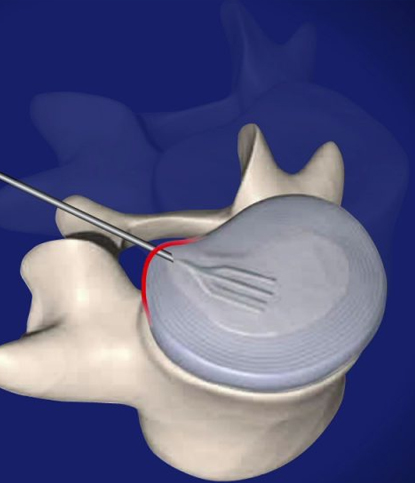
Lumbar Disc Herniation and Nucleoplasty (Laser Spine Treatment)
Lumbar Disc Herniation and Nucleoplasty (Laser Spine Treatment)Information by Turkish Neurosurgeon Dr Ufuk Soylu
Lumbar disc herniation, commonly known as a "slipped disc" or "herniated disc," occurs when one of the discs between the vertebrae in the lower spine moves out of place or ruptures.
As a result, it can press on nearby nerves, causing pain, numbness, or weakness in the lower back and legs.
Among Turkish patients living in the UK, lower back pain and sciatica are very common complaints. Fortunately, many cases can be successfully treated using modern, minimally invasive methods, without the need for open surgery.
One of the most advanced and effective techniques is nucleoplasty, also known as laser spine treatment.
🔹 What Is Lumbar Disc Herniation?
Between each vertebra, there are flexible discs that act as cushions and allow movement of the spine.
Inside each disc is a soft, gel-like material called the nucleus pulposus.
When this material pushes out through a weakened part of the disc, it can compress the spinal nerves — this condition is known as lumbar disc herniation.
🔹 Common Symptoms
The symptoms of a herniated disc may vary depending on the degree and location of the nerve compression, but typically include:
• Lower back pain
• Pain radiating down one leg (sciatica)
• Numbness or tingling in the leg or foot
• Muscle weakness
• Difficulty standing, walking, or sitting for long periods
If these symptoms persist for more than a few weeks, an evaluation by a neurosurgeon is strongly recommended.
🔹 What Is Nucleoplasty?
Nucleoplasty is a minimally invasive, non-surgical treatment option for patients with small or moderate disc herniations.
During the procedure, a special needle is inserted into the affected disc, and radiofrequency (RF) energy is applied to remove a small portion of the nucleus material inside the disc.
This reduces internal pressure, allowing the herniation to shrink and relieving pressure on the nerve root.
🔹 How Is Nucleoplasty Performed?
• The procedure is performed under local anaesthesia, and the patient remains awake.
• It usually takes 20–30 minutes.
• No surgical incision or stitches are required.
• Patients can typically go home the same day.
Because of its simplicity and safety, nucleoplasty is an excellent choice for those seeking non-surgical treatment for back pain and herniated discs.
🔹 Who Is a Good Candidate for Nucleoplasty?
Nucleoplasty is most suitable for patients with mild to moderate disc herniations who have not responded to medication or physical therapy, and who do not have severe nerve compression or muscle weakness.
MRI scans are used to confirm the diagnosis and determine whether the patient is a good candidate for this procedure.
🔹 Recovery After Nucleoplasty
• Most patients return to daily activities within a few days.
• Back and leg pain generally improves significantly within several weeks.
• A proper posture and exercise program can help prevent recurrence.
🧠 Nucleoplasty Treatment in Istanbul and Izmir – Dr Ufuk Soylu
As a Turkish neurosurgeon, I offer modern, safe, and effective treatments for lumbar disc herniation, including nucleoplasty, at our partner hospitals in Istanbul and Izmir.
This technique is an ideal solution for patients who wish to avoid open surgery, long recovery periods, or the risks associated with general anaesthesia.
If you or someone you know is suffering from back pain, leg pain, or sciatica, you can book a consultation with your MRI results for a detailed evaluation.
Early diagnosis is key to preventing permanent nerve damage and achieving full recovery.
The Difference Between Nucleoplasty and Traditional Surgery






